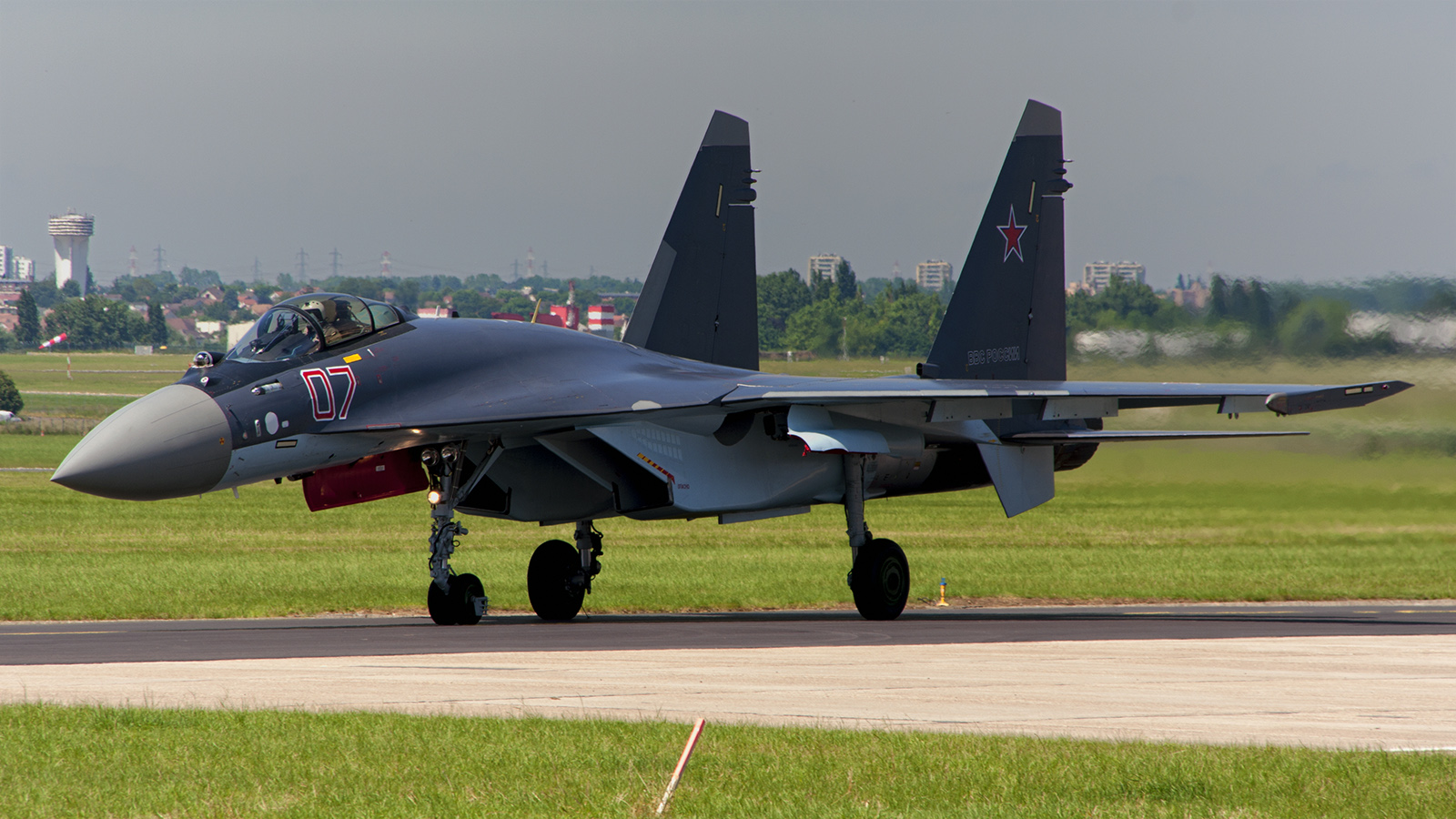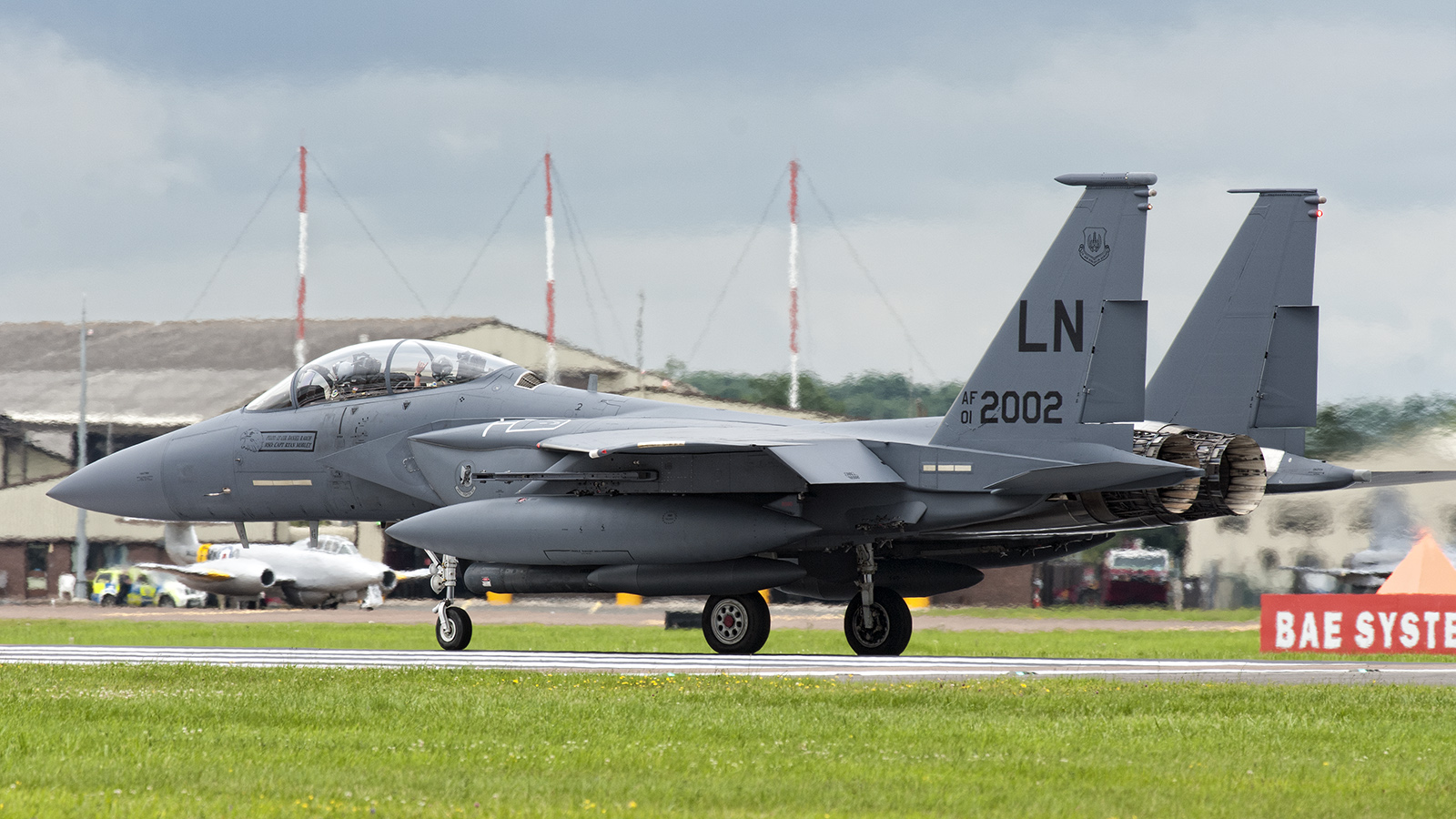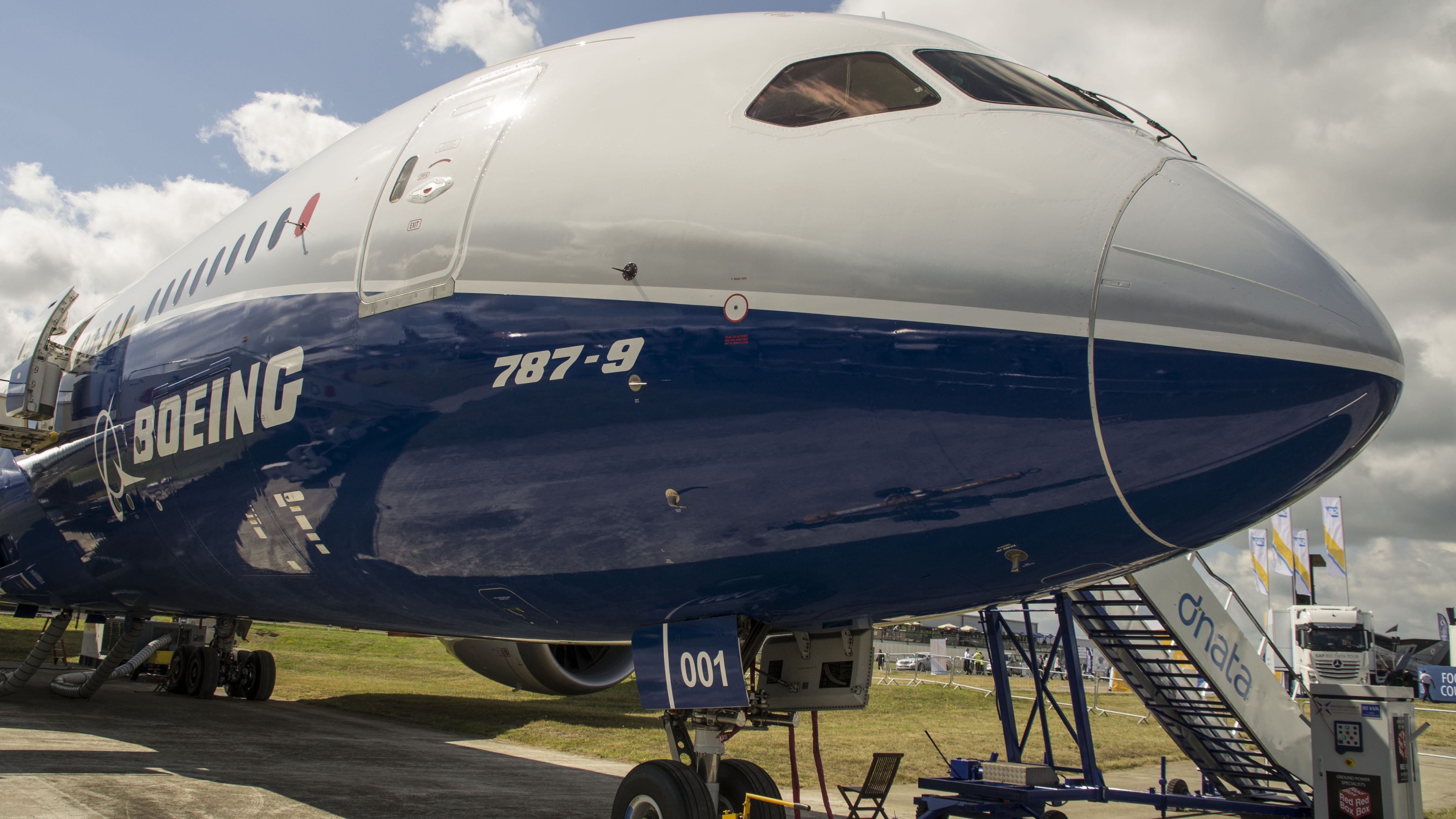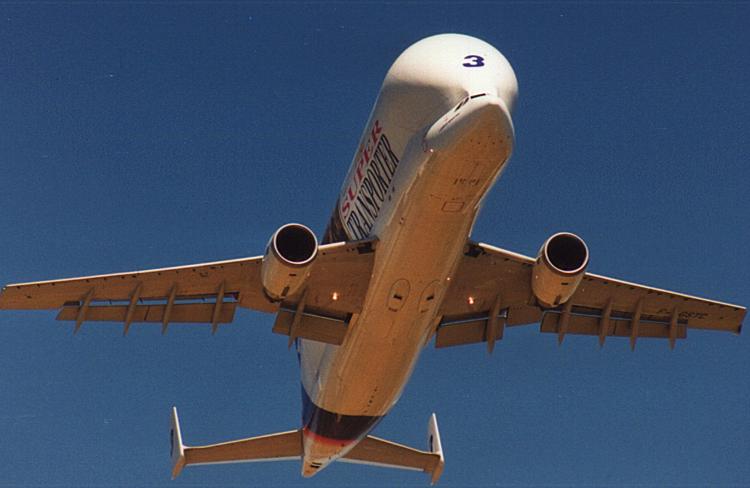
The Sukhoi Su-35 is a heavily-upgraded derivatives of the Su-27 ‘Flanker’. They are single-seat, twin-engine supermaneuverable multirole fighters, designed by Sukhoi and built by Komsomolsk-on-Amur Aircraft Production Association (KnAAPO). Sukhoi’s Su-35S made its debut at the 2013 Paris air show and with exceptional maneuverability, the fighter is set to be the star of the show.
Developing nation:
- Russia.
Manufacturer/designer:
- Sukhoi Design Bureau.
Production Lines:
- Komsomolsk-on-Amur.
Type aircraft:
- Multirole fighter.
First flight:
- Su-27M: 28 June 1988
- Su-35: 19 February 2008.
Number built:
- Su-35: 14
The core of the Su-35 armament is a new radar control system with a phased antenna array (Irbis-E). It features unique capabilities in terms of the target detection range. This is developed by V V Tikhomirov Research Institute of Instrument Production. In design, this is an X-waveband multi-role radar with a passive Phased Antenna Array (PAA) mounted on a two-step hydraulic drive unit (in azimuth and roll). The antenna device scans by an electronically controlled beam in azimuth and angle of elevation in sectors not smaller than 60°. The two-step electro-hydraulic drive unit additionally turns the antenna by mechanic means to 60° in azimuth and 120° in roll. Thus, in using the electronic control and mechanical additional turn of the antenna, the maximum deflection angle of the beam grows to 120°.
Irbis-E radar control system detects and tracks up to 30 air targets, retaining continuity of space observation and engaging up to 8 targets. The system detects, chooses and tracks up to 4 ground targets in several map-making modes with various resolution at a range of up to 400 km, without stopping to monitor the airspace.
Irbis-E radar detects air targets with an absolute cross section of 3 m2 on a head-on course at a range of up to 400 km.
Being an improvement on radars with a PAA, Irbis has much better capabilities: expanded (by more than twice) operating frequency band, increased from 70? to 120? target detection and tracking zone in azimuth, substantially (by 2-2.5 times) increased effective range, improved anti-jamming capability, etc. In this aspect, Irbis is comparable to the best foreign counterparts, outperforming most of the US and European-made radars with passive and active PAA.
The Research Institute has been developing Irbis since 2004. By now, the engineering prototypes of the system have passed the required bench trials. The first of them has been installed on the Su-30MK2 flying laboratory and is undergoing flight tests. The first flight of the flying laboratory with Irbis onboard occurred in early 2007 at Gromov Flight Test Institute. During the flight, the laboratory proved the superior performance of the new radar in the air-to-surface operating mode.
Among other new onboard systems of the Su-35 is modern navigation and radio communication equipment, systems maintaining fighters operation in a formation and a highly efficient electronic countermeasures suite. The component package of the latter and its complementation with specific jamming devices can be determined by the customer.
Armament:
In addition to the armaments onboard the modern Su-30MK, it is planned to additionally arm the Su-35 with new types of air-to-air and air-to-surface guided missiles, including long-range types. The maximum ordnance load of the Su-35 is 8,000 kg. This is placed in 12 weapon stations.
General characteristics:
- Crew: 1
- Length: 21.9 m (72.9 ft)
- Wingspan: 15.3 m (50.2 ft) (with wingtip pods)
- Height: 5.90 m (19.4 ft)
- Wing area: 62.0 m² (667 ft²)
- Empty weight: 18,400 kg (40,570 lb)
- Loaded weight: 25,300 kg (56,660 lb)
- Max. takeoff weight: 34,500 kg (76,060 lb)
- Powerplant: 2 × Saturn 117S with TVC nozzle turbofan
- Dry thrust: 8,800 kgf (86.3 kN, 19,400 lbf) each
- Thrust with afterburner: 14,500 kgf (142 kN, 31,900 lbf) each
- Fuel capacity: 14,350 litres (3,790 US gal)
Performance:
- Maximum speed: Mach 2.25 (2,390 km/h, 1,490 mph) at altitude
- Range:
- High altitude: 3,600 km (1,940 nmi)
- Ground level: 1,580 km (850 nmi)
- Ferry range: 4,500 km (2,430 nmi) with 2 external fuel tanks
- Service ceiling: 18,000 m (59,100 ft)
- Rate of climb: >280 m/s (>55,100 ft/min)
- Wing loading: 408 kg/m² (84.9 lb/ft²)
- Thrust/weight: 1.13
Armament:
- Guns: 1 × 30 mm GSh-30 internal cannon with 150 rounds
- Hardpoints: 14 hardpoints, consting of 2 wingtip rails, and 12 wing and fuselage stations with a capacity of 8,000 kg (17,630 lb) of ordnance, and provisions to carry combinations of:
- Rockets:
- S-25LD laser-guided rocket, S-250 unguided rocket
- B-8 unguided S-8 rocket pods
- B-13 unguided S-13 rocket pods
- Missiles:
- Vympel R-27R/ER/T/ET/EP
- Vympel R-77 – the proposed R-77M1, R-77T
- Vympel R-73E/M, and R-74M
- Kh-31A/P
- Kh-59
- Kh-29T/L
- Bombs:
- KAB-500L laser-guided bomb
- KAB-1500 laser-guided bomb
- LGB-250 laser-guided bomb
- FAB-250 250-kilogram (550 lb) unguided bombs
- FAB-500 500-kilogram (1,100 lb) unguided bombs
- Other:
- buddy refueling pod
- Rockets:
Avionics:
- Irbis-E passive phased array radar
- KNIRTI SAP 14 jamming pod (centreline pylon)
- KNIRTI SAP 518 jamming pod (one each on both wingtips)
OLS-35 infra-red search and track system - Khibiny-M electronic warfare suite
All pictures courtesy of Zijde Aviation Photo and Publishing, Rob Vogelaar and Marcel van Leeuwen













